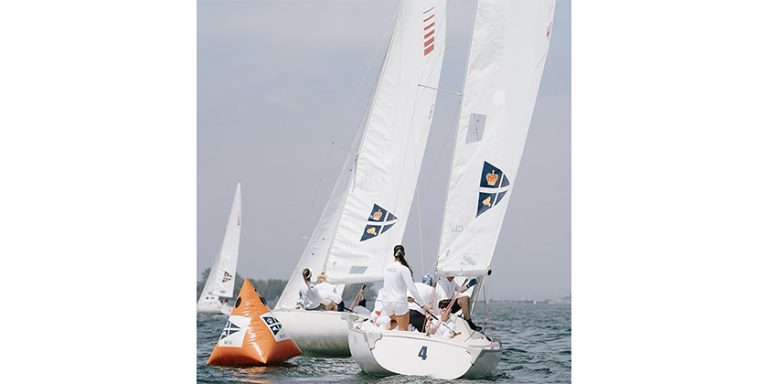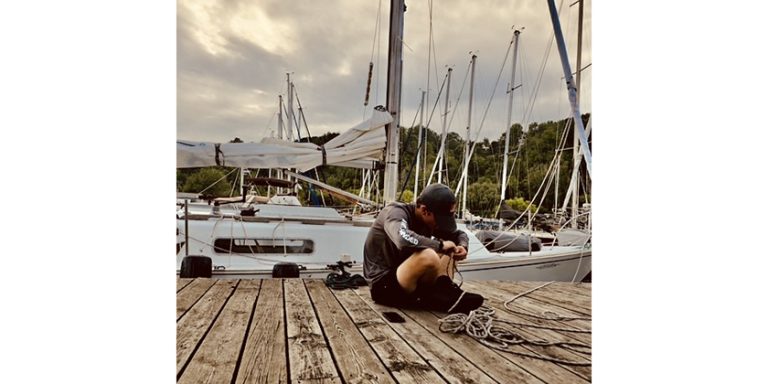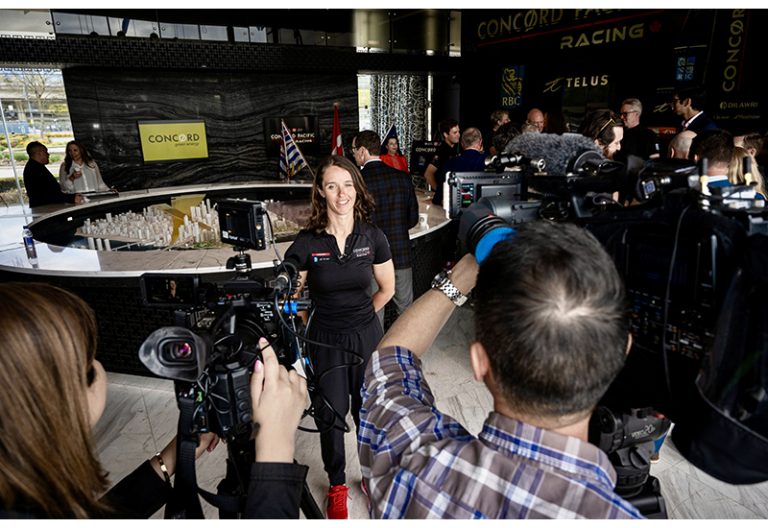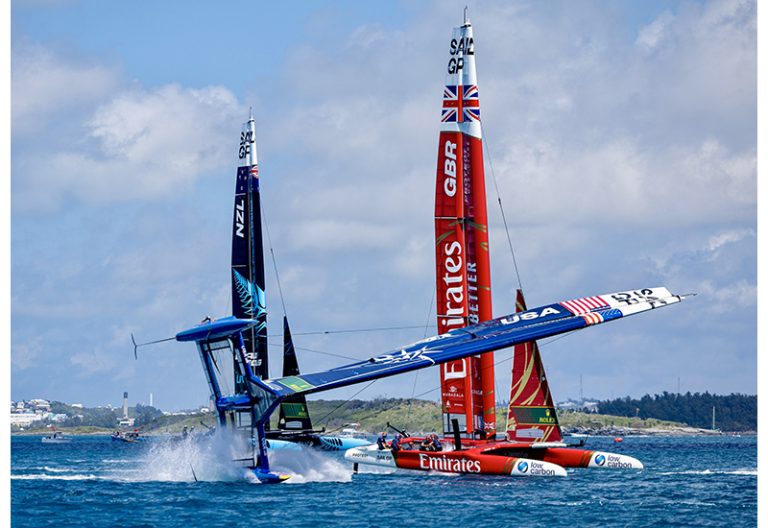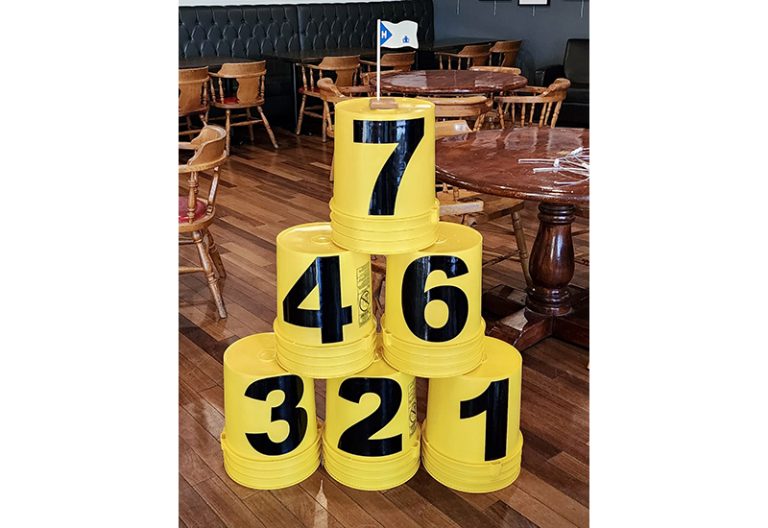The Big Picture: Pati Catala de Vela
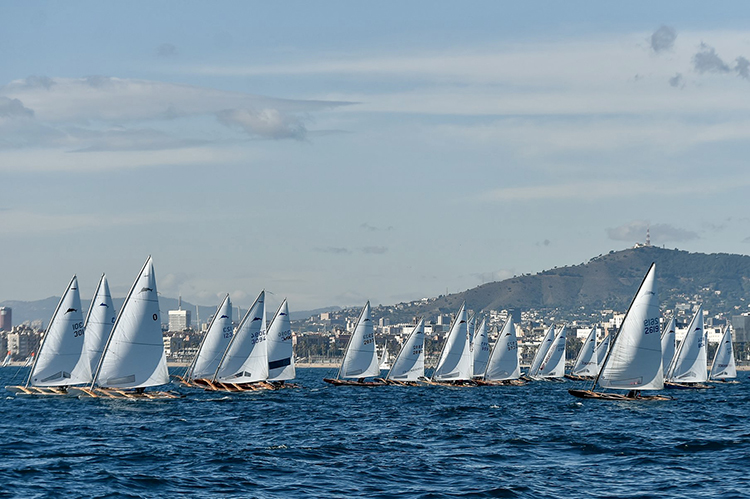
August 16, 2023
Photo: © GerardFranco
We got a release from the Americas Cup folks marveling at these eccentric boats that are unique to the Barcelona area, where AC37 will take place.
It’s rare for pro sailors to look at a boat and go: “how does that work?” But down in Barcelona there is such a craft – the Patín de Vela, or more commonly the Patín Catalán – a hugely popular 18-foot-long, beach-launched catamaran with a 5.24-foot beam that has no rudder, no centreboard, no boom and is controlled by minute adjustments on the dovetail mainsail and exquisite use of body weight to steer.
The 210 registered sailors at the regatta that runs on the 16th and 17th September 2023 will be representing a total of 27 clubs with sailors from Andalucia, Catalonia, Valencia, as well as from Germany, Austria and Belgium. A strong female representation will be at the regatta with 17 women confirmed – again a record number for the Pati Catala de Vela.
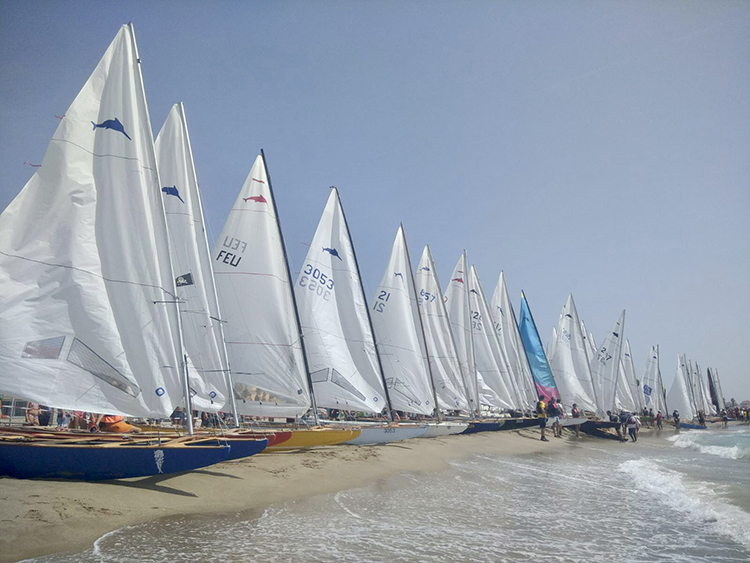
For five days of the week, the Pati Vela Club de Barcelona organises racing, at noon, with these pure craft launched off the Barceloneta and Badalona beachfronts, with the weekend racing both popular and highly contested. The origins of the Patín de Vela can be traced back to the 1870s and the beach off Badalona where fishermen would stand on two hulls and paddle out to check nets but by the early part of the 20th century, the paddles that were similar to modern-day canoeists paddles, were replaced by oars and the craft were adapted for recreation and at times, racing, with the crew sitting down and rowing.
In 1942, the Mongé brothers from Catalonia first started experimenting with wooden masts and sails, placing the foot of the mast far forward and introducing the dovetail mainsail. The addition of a steel rack across the stern, a feature that is still there today, allowed the batten-less mainsail to be sheeted wide but could, crucially, be flattened for upwind work. As the technique developed so did the control lines and on today’s craft, the Patín de Vela ‘skates’ feature an array of control systems that can alter the forestay tension on each tack (the boats have two forestays, one mounted on each hull) to control the bend of the mast and aid direction.
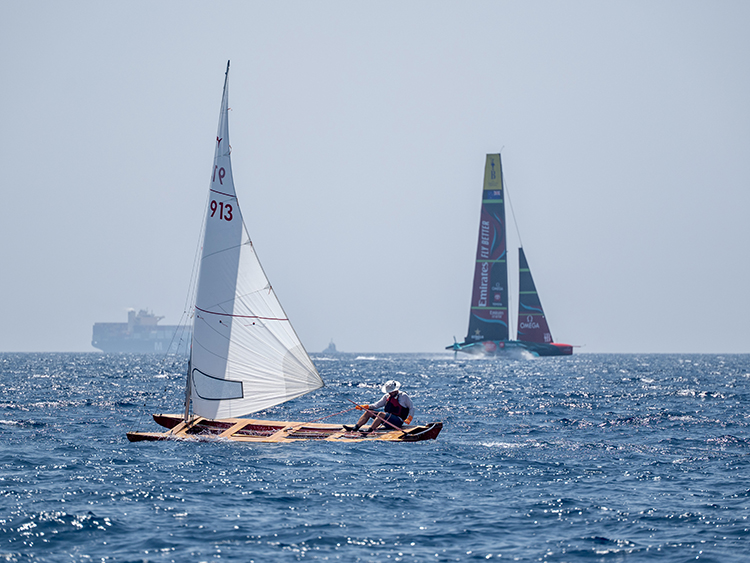
All the control systems lead back to the ‘piano’ an area at the midpoint of the craft between the hulls on the crossbeams that delivers the crucial free-flying cunningham and stay adjustments whilst the mainsheet feeds forward and is trimmed from just aft of the mast so the helm can keep looking forward. It’s a boat that rewards technique with many sailors spending a lifetime perfecting their balance and control and the racing is fast and desperately close all the way through the fleet.
A curiosity born from innovation in Catalonia, the Patín de Vela class also has fleets in France, Holland and Belgium but their uniqueness in the world of sailing makes them remarkable boats to see on the water and inspires much debate as to how these highly skilled sailors, sailing in the purest form of the sport, control their vessels with such dexterity.

